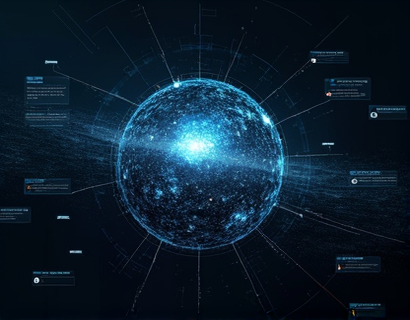AI-Driven Calculus Learning: Transforming Education with Specialized Insights
In the rapidly evolving landscape of education, the integration of Artificial Intelligence (AI) is revolutionizing the way students and educators approach complex subjects like calculus. This article delves into the innovative use of AI-driven platforms that offer specialized insights into calculus, tailored for students, educators, and young learners. These platforms not only provide accurate and verified information but also ensure a safe and child-friendly environment for all users.
Understanding the Need for AI in Calculus Education
The study of calculus, a fundamental subject in mathematics, often poses significant challenges for students and educators alike. The abstract concepts, intricate problem-solving techniques, and the need for precise understanding make calculus a daunting subject. Traditional teaching methods, while effective for many, may not cater to the diverse learning needs of all students. This is where AI-driven platforms come into play, offering a personalized and interactive learning experience that can bridge the gaps left by conventional methods.
AI-Driven Platforms: A New Paradigm in Calculus Learning
AI-driven platforms are designed to provide specialized insights into calculus, leveraging advanced algorithms and machine learning techniques to deliver content that is both accurate and accessible. These platforms can analyze a user's understanding level, learning pace, and specific areas of difficulty, and adapt the content accordingly. This personalized approach ensures that each user receives tailored explanations and practice problems, enhancing their learning experience.
Key Features of AI-Driven Calculus Learning Platforms
- Personalized Learning Paths: AI algorithms assess the user's current knowledge and skill level, creating a customized learning plan that addresses specific weaknesses and builds on strengths.
- Interactive Problem Solving: Users can engage with the platform to solve complex calculus problems step-by-step, receiving immediate feedback and explanations for each step.
- Comprehensive Resource Library: A vast repository of tutorials, videos, and articles covering various calculus topics, ensuring users have access to a wide range of learning materials.
- Real-Time Assistance: AI chat interfaces provide instant answers to user queries, making it convenient for students to get help whenever they need it.
- Child-Friendly Interface: Specialized versions of these platforms are designed with safety and usability in mind, ensuring that young learners can access and benefit from the content without risks.
Enhancing Understanding Through AI Chat Interfaces
One of the most innovative features of AI-driven calculus learning platforms is the AI chat interface. This interactive tool allows users to engage in natural language conversations, asking questions and receiving detailed explanations in a conversational format. The chat interface is designed to mimic human-like interactions, making the learning process more engaging and intuitive.
For example, a student struggling with integration techniques can type a question like, "How do I solve this integral?" and receive a step-by-step solution along with a detailed explanation of each step. The AI can also recognize when a user is confused and offer additional resources or simpler explanations to clarify the concept.
Benefits of AI Chat Interfaces for Students
- Instant Access to Help: Students can get immediate assistance with difficult problems, reducing frustration and enhancing learning efficiency.
- Improved Comprehension: The step-by-step explanations and interactive nature of the chat interface help students grasp complex concepts more effectively.
- Encourages Self-Learning: By guiding users through problem-solving processes, the chat interface fosters independent learning and critical thinking skills.
- Supports Diverse Learning Styles: The conversational format caters to different learning preferences, making calculus more accessible to a broader range of students.
Ensuring Accuracy and Verification
Accuracy is paramount in educational content, especially in a subject as precise as calculus. AI-driven platforms employ rigorous content verification processes to ensure that all information provided is correct and up-to-date. This involves multiple layers of review, including expert validation and continuous updates based on the latest research and educational standards.
Moreover, these platforms often integrate with trusted educational resources and databases, further guaranteeing the reliability of the content. For educators, this means they can confidently recommend these tools to their students, knowing that the information is both accurate and pedagogically sound.
Content Verification Processes
- Expert Review: Content is reviewed by subject matter experts who validate the accuracy and relevance of the information.
- Continuous Updates: The platform regularly updates its content to reflect the latest developments in calculus and educational methodologies.
- User Feedback: User interactions and feedback are analyzed to identify and correct any inaccuracies or areas for improvement.
- Automated Checks: AI algorithms perform real-time checks to ensure that the generated content meets predefined accuracy standards.
Creating a Safe and Child-Friendly Environment
Recognizing the importance of a safe learning environment, especially for young learners, AI-driven calculus platforms incorporate various features to ensure a secure and positive experience. These platforms adhere to strict privacy policies and comply with regulations such as COPPA (Children's Online Privacy Protection Act) to protect user data.
Child-friendly versions of these platforms are designed with intuitive interfaces, age-appropriate content, and parental control options. For instance, the chat interface uses simple language and avoids complex jargon, making it easy for children to understand and interact with. Additionally, the platform monitors user interactions to prevent exposure to inappropriate content or interactions.
Features for Child-Friendly Platforms
- Intuitive User Interface: Designed with a simple and visually appealing layout that is easy for children to navigate.
- Age-Appropriate Content: Learning materials are tailored to different age groups, ensuring that the content is both challenging and accessible.
- Parental Controls: Parents can monitor their child's progress, set usage limits, and manage privacy settings.
- Safe Interactions: The platform ensures that all user interactions are monitored and filtered to prevent any harmful content or interactions.
- Educational Games and Activities: Interactive elements such as games and puzzles make learning calculus fun and engaging for young learners.
Supporting Educators with AI-Driven Tools
AI-driven platforms not only benefit students but also provide valuable tools for educators. These tools can help teachers enhance their teaching methods, track student progress, and provide targeted support where needed.
Tools for Educators
- Lesson Planning Assistance: AI can suggest lesson plans and activities based on the curriculum and the specific needs of the class.
- Real-Time Progress Tracking: Teachers can monitor student progress in real-time, identifying areas where students may be struggling and intervening promptly.
- Customized Resource Recommendations: The platform can recommend additional resources, such as videos or articles, to supplement the classroom teaching.
- Automated Grading: AI can assist in grading assignments and exams, saving time and allowing teachers to focus more on teaching and supporting students.
- Professional Development: Access to AI-driven tutorials and resources can help teachers enhance their own understanding of calculus and stay updated with the latest teaching methodologies.
Case Studies and Success Stories
Several educational institutions and individual users have already experienced the benefits of AI-driven calculus learning platforms. For instance, a high school in the United States implemented an AI-powered calculus tool and saw a significant improvement in student performance and engagement. The personalized learning paths and instant feedback helped students overcome their fears and develop a deeper understanding of calculus concepts.
Another example is a university math department that integrated AI chat interfaces into their online courses. Students reported higher satisfaction levels and better retention of material, attributing this to the interactive and supportive nature of the AI chat tools.
Testimonials
"Using the AI chat interface for calculus has been a game-changer for me. I never felt more supported and understood as I did when I could ask questions and get immediate, clear explanations." - High School Student
"The real-time progress tracking and customized resources have made teaching calculus more effective and enjoyable. AI has truly enhanced our teaching capabilities." - Mathematics Teacher
Future Prospects and Challenges
The integration of AI in calculus education holds immense potential for the future. As technology advances, we can expect more sophisticated and intuitive AI tools that further personalize the learning experience. However, there are also challenges to address, such as ensuring equitable access to these technologies and addressing the digital divide that may exist in certain regions.
Moreover, continuous research and development are necessary to refine AI algorithms and improve the accuracy and effectiveness of these platforms. Collaboration between educators, technologists, and policymakers will be crucial in overcoming these challenges and maximizing the benefits of AI-driven calculus learning.
Conclusion
AI-driven calculus learning platforms represent a significant leap forward in educational technology, offering personalized, interactive, and accurate learning experiences for students and educators alike. By leveraging the power of AI, these platforms can help demystify calculus, making it more accessible and enjoyable for all. As the technology continues to evolve, the potential for transforming calculus education is vast, paving the way for a new era of learning.









































